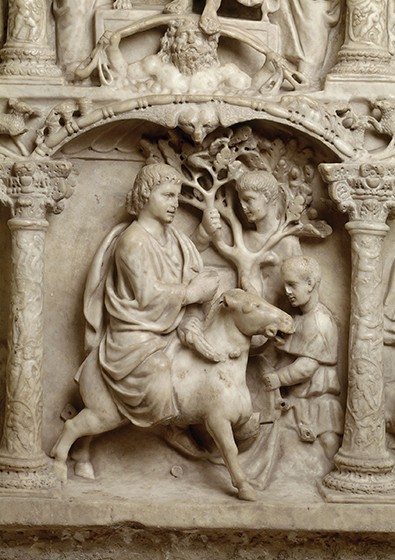“Entry into Jerusalem” from the sarcophagus of Junius Bassus, St. Peter’s Basilica, Vatican

The triumphal entry of Jesus into Jerusalem, a popular theme in early Christian art, is depicted on the sarcophagus of Junius Bassus, a Roman prefect who became a Christian convert shortly before his death (ca. 359). The scene, used to depict Christ’s authority on earth, appears on the sarcophagus directly beneath an image of Christ enthroned with his feet on the head of Caelus, a primal god of the heavens in Roman myth—an image showing that Christ is also ruler of heaven. There are striking similarities between depictions of Christ’s triumphal entry and those showing the triumphal arrival or adventus of an emperor in a newly conquered province. But there are significant differences as well. In the adventus iconography, the emperor is typically depicted in full military apparel, riding a royal steed, and leading a military procession in a victory parade. Christ, on the other hand, sits astride a humble donkey, amid simple followers, with no royal or military entourage accompanying him. Christ is a different kind of king.





